Lemons are one of the leading acidic citrus fruits. However, due to poor fruit quality, there is a significant reduction in marketable yields, which is a substantial financial loss to the farmer. Lemons are one of the most important sources of vitamin C, one of the essential vitamins for the human body. Lemon trees also need full sunlight for proper growth. The cultivation of Lemon is becoming more popular than any other citrus fruit due to its widespread use. Let’s discuss the top 15 steps to boost Lemon yield.
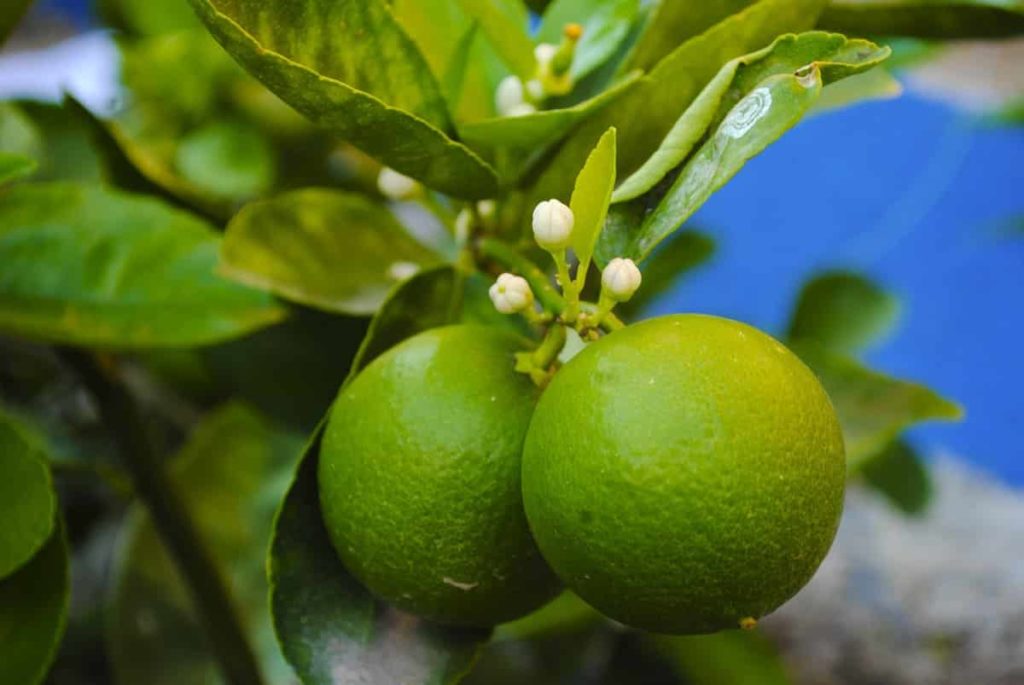
Lemons are famous in the kitchen garden. Unfortunately, it suffers from a severe problem of fruit breakage in the summer, which leads to a significant reduction in marketable yields and causes substantial financial losses to the farmer every year. However, applying some management methods can help improve the quality of Lemons by controlling the severity of fruit breakage. Poor drainage, lack of sunlight, improper irrigation, and lack of care can slow down the growth of your Lemon tree, which results in reduced fruit production. Citrus fruit production and quality are affected by many factors, including climatic conditions and production methods.
Top 15 steps to boost Lemon yield
Step 1: Select high-yielding varieties
The most commonly grown Lemon variety are Kagzi lime. Still, the four recently identified high-yielding types, Vikram, Prumalini, PKM, and Sai Sharbati, are now gaining popularity. In addition, many kinds of Lemon grown throughout the country are Assam Nimbu/ Nemu Tenga, Lisbon, Sweet Lemon/Lime, Genoa, Rough Lemon, Nepali Oblong/ Pat Nebu Villafranca, Nepali Round.
Step 2: Soil and sun requirement for plant growth
Lemon trees can tolerate many soils, including poor soils, mostly well-drained, slightly acidic soils. Give plenty of water and some mulch to help retain moisture. Lemons need moderate humidity and plenty of sunshine to produce good fruit.
In case you missed it: Organic Lemongrass Cultivation, Farming In India
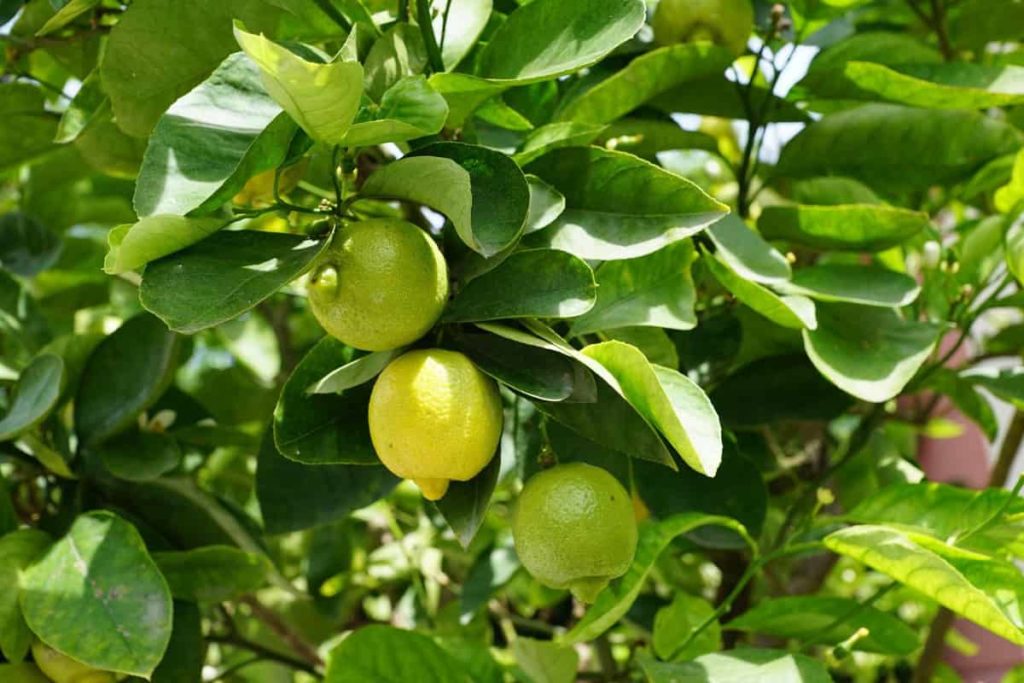
Step 3: Tips for growing more Lemons
- Fertilizer should be added as a base when planting. Just adding dung will not get the result you want.
- Lemons give good yields if they contain a good amount of nitrogen and phosphorus.
- Never grow Lemons as an intercrop between other plants.
- Most importantly, it needs good sunlight. It does not require much use of pesticides. Be sure to water the bed at least twice a summer.
- It is necessary to prune the Lemon tree after fruiting.
- Unhealthy stalks and stems should be removed with Lemon. Lemons come out of the new stalk.
- It is best to use bone meal and potash to accelerate Lemon growth.
- The soil around it should be well-drained to take root properly. The most common of these are butterfly worms. A mixture of neem-garlic is best to prevent this. This mixture is also an effective way to curl its leaves.
Step 4: Nutrition is essential to increase the yield of Lemons
- Balanced crop nutrients are necessary to help build a tree structure that can support this fruit load and ensure that the fruit is full and, at the same time, meet the needs of the market.
- The high yield of Lemons is achieved by accurately balancing the number of fruits on the tree and then making sure that they reach the optimal size and weight of the fruit.
- Calcium nutrition is essential, especially during the early stages of growth and fruit set.
- Nitrogen and potassium are the essential nutrients needed for the strong growth and productivity of the Lemon tree.
- Calcium is the most abundant element in Lemon leaves, and multiple uses during the season produce high-yielding crops with high-quality fruit. All Lemon trees are heavy feeders and require a lot of energy. They are likely to benefit from nitrogen-rich or other NPK fertilizers that contain essential micronutrients and additional micronutrients such as iron, manganese, zinc, boron, and copper to supplement nutrient deficiencies in the soil.
Step 5: Pruning and Training for getting more yield
50-60 cm shoots should be removed near ground level for proper growth of plant stem. Water suckers should be released in the early stages of development. Smaller Lemon trees may need to be pruned more regularly to encourage healthy branch growth. The pruning also allows air to flow easily between the branches and leaves and allows light to reach all tree areas. Lemon trees can be pruned after harvest to increase new growth and fruit production. Lemon trees usually bloom in the spring, so prune your Lemon trees before they bloom to get the most out of them.
Step 6: Increasing the size of Lemons
The crop load determines the fruit’s yield and size, and too many fruits can result in small fruits. Using careful thinning and growth regulators can reduce the number of fruits to an optimum amount per tree. Potassium is a crucial stimulus to fruit size and requires significant nitrogen during fruit growth and development. However, too much nitrogen in the late growth stage can limit fruit size. Therefore, the use of balanced nutrition is essential. Phosphorus can also inhibit fruit growth.
In case you missed it: Organic Lemon Farming – Production Business Plan
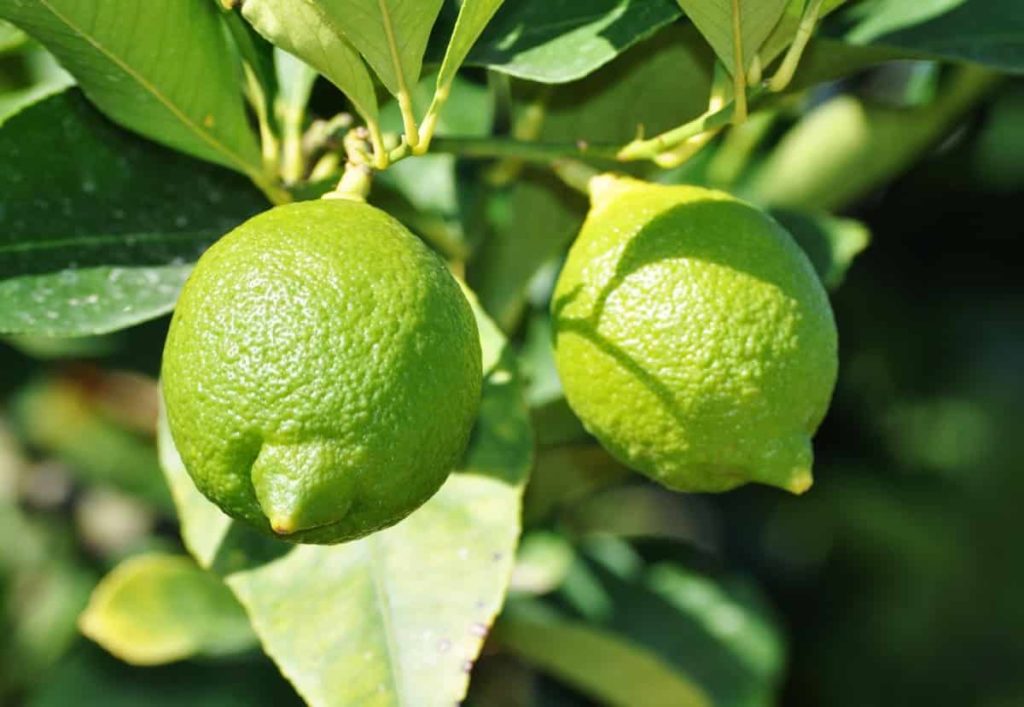
Step 7: Reasons for a Lemon tree doesn’t bloom
One of the common reasons is that a Lemon tree doesn’t bloom like all fruit trees. It can be any range of problems, how it is growing, or even what it has been fed. Here are some common causes for the lack of flowering in Lemon trees;
- Insufficient water – Water is, in many cases, the key to solving the problem of the non-flowering of Lemon trees. More water and more underwater produce the same result – the search for middle ground is where bloom’s success lies. Only water the Lemons when the top four inches (10 cm) of soil is completely dry, then water them thoroughly.
- Overfertilization – Lemons will try harder to produce new, green leaves if they are given too much fertilizer, especially nitrogen.
- Lack of sun – Lemons need full sun exposure, indoors or outdoors. Inside, you can transmit this type of light with a full spectrum bulb about 12 inches (31 cm) away from the plant, and it is not left on for more than 12 hours a day. Outside, remove any over-hanging branches or obstructions preventing Lemons from getting too much sun. If it is not very large, you may want to consider replacing it in a sunny spot.
Step 8: Lemon fruit drop causes and prevention
- Extreme temperatures can cause the fruit to dry out or fall off the tree due to extreme weather stress. These can be climatic changes when the temperature suddenly rises from hot to cold or from cold to hot in a short time. Lemon trees prefer climates with temperatures between 21 to 38°C. Once the temperature rises above 38°C, the Lemon tree will stop growing, or photosynthesize, causing it to become somewhat inactive. If the heat lasts too long, it can cause the tree’s fruit to fall.
- Dry conditions – If the tree is dry during the day, it can cause the fruit to dry up and fall off. If lack of water is severe or frequent, it can cause yellowing of leaves and falling of trees. Water stress is a common cause of small fruits drying out and falling from trees in late spring and early summer. Once the fruit is slightly larger, the tree can withstand considerable water pressure without damaging the fruit; however, the fruit size can be significantly reduced. To avoid over-fruiting, water deeply and frequently during hot spells. Applying mulch around your tree can help prevent the tree from drying out during watering and prevent the loss of immature fruit.
- Not enough nitrogen – Nitrogen deficiency can also cause the fruit to dry up or fall off. Trees need the most nutrients in spring and early summer as they bloom and set fruit.
Step 9: Growth regulators for increasing fruit size
The application of plant growth regulators (PGRs) can provide significant economic benefits to Lemon growers when used in the right conditions. Depending on the crop and timing, PGRs can improve fruit sets, increase fruit size by reducing crop loads, increase crop yields by delaying peel age, and reduce fruit drop. Naphthalene acetic acid (NAA) is used to thin fruit when over-set. Thinning of heavily felled trees with NAA increases fruit size.
In case you missed it: Lemon Flower and Fruit Drop, Causes, Control Methods.
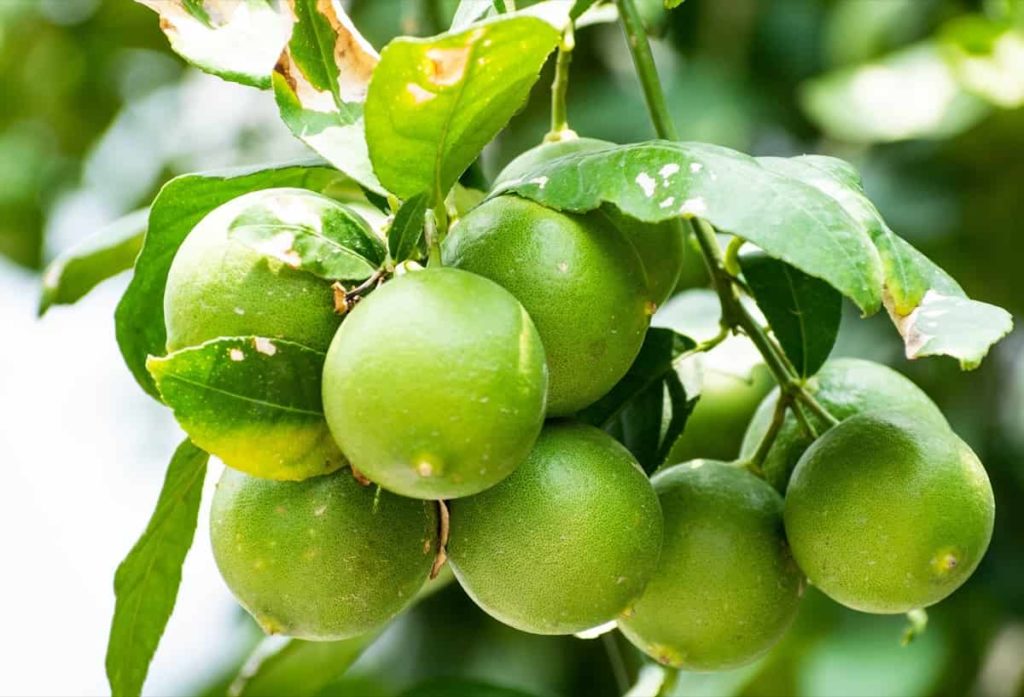
The NAA’s thinnest reaction appears when applications are made when the average diameter of the fruit is about 1/2 inch, which is usually six to eight weeks after opening. Diluting peanuts and sunburst tangerines with NAA increases pack out through fruit size, average fruit weight, and improved fruit appearance. To improve the fruit set, gibberellic acid (GA) is recommended for weakly parthenocarpic Lemon hybrids without good cross-pollination.
Step 10: Preventing Lemon fruit splitting
Peel splitting is often caused by soil moisture and extreme fluctuations in temperature and humidity. Lemon peel splitting usually occurs during droughts or dry seasons followed by heavy rainfall, and this is due to environmental factors – extreme fluctuations in temperature, humidity, and soil moisture. Fruit splitting also occurs when dry spells occur after prolonged, wet periods. Through proper irrigation, reducing stress and crop loads can reduce physical stress and distribution in sensitive fields.
Lemon trees deficient or low in potassium and calcium result in fruit skins that are either too thin or structurally weak and more prone to stress. Therefore, better potassium and calcium supply can minimize the distribution. A better supply of calcium by using soil and leaves during summer also reduces the risks. Calcium nitrate spray applied to the fruit should cover the entire surface of the fruit to be effective.
Reducing physical stress on a Lemon tree will reduce the chances of fruit splitting, and this can be done by;
- Watering constantly, not letting the Lemon tree dry out too much.
- The proper feeding ensures that the tree has the necessary nutrients from a balanced fertilizer that provides all the micronutrients and micronutrients.
- With proper pruning, the crop load can be reduced.
Step 11: How to encourage fruit on Lemon trees
Water the tree deep and frequently during the fall and give half the irrigation in winter. Resume deep watering in spring and summer as these juicy fruits need a lot of moisture to form. In the spring, fertilize the Lemon tree with a proper diet, including adding phosphorus to encourage flowering and fruiting, and prune only where necessary. The fruit will stick to the tops of the branches, so it is best to remove only the deadwood and the hardy branches.
Sep 12: Thinning to increase fruit quality
Thin out fruits over the years with heavy yields, no more than two Lemons per cluster. Fewer fruits are produced by thinning, but they are larger and of better quality. Some Lemon trees follow an alternate bearing pattern, creating a large crop one year and a small crop the next. This alternate bearing pattern is regular and often occurs in mild climates.
In case you missed it: Lemongrass Farming Business Plan for Dummies
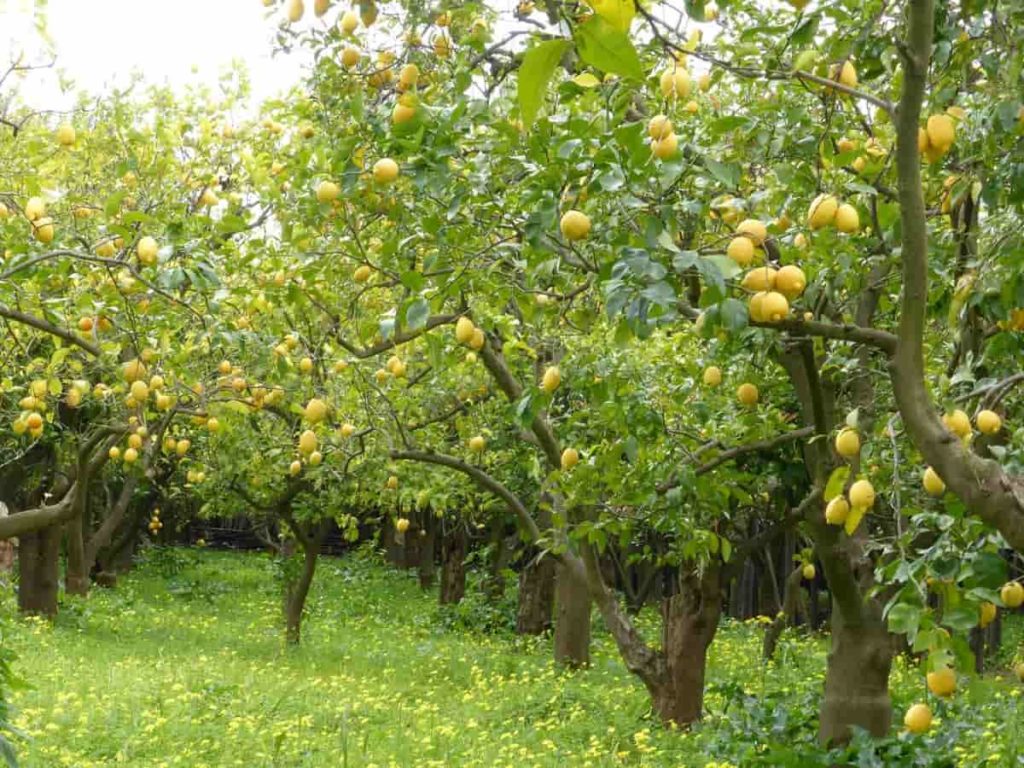
Step 13: Irrigation for proper plant growth
Lemons need irrigation at regular intervals. Life-saving irrigation should be provided in winter and summer. Irrigation is essential for the excellent flowering, fruiting, and proper growth of plants. Excessive irrigation can also lead to diseases such as root rot and collar rot. High-frequency irrigation is beneficial. Salty water is harmful to crops. Partial drying of the soil in spring does not affect the plants. Allow the topsoil to dry before watering, but avoid prolonged exposure to water, which can stunt growth and kill young trees. Avoid over-watering as wet soil also kills Lemon trees.
Step 14: Pests and Diseases control for more yield
Protect the tree from diseases and pests, and take action at the first sign of trouble. Healthy plants bear the most fruit. Unfortunately, whiteflies, aphids, scales, and mites sometimes infect Lemon trees. These insects rarely cause severe damage, but they can fall off prematurely and stain the fruit. For small trees, an intense burst of water from the hose will knock out some of the tree pests, and insecticide soaps or neem oil sprays are somewhat effective in controlling adult pests.
In case you missed it: Lemon Cultivation income (Nimbu/Citrus); Project Report
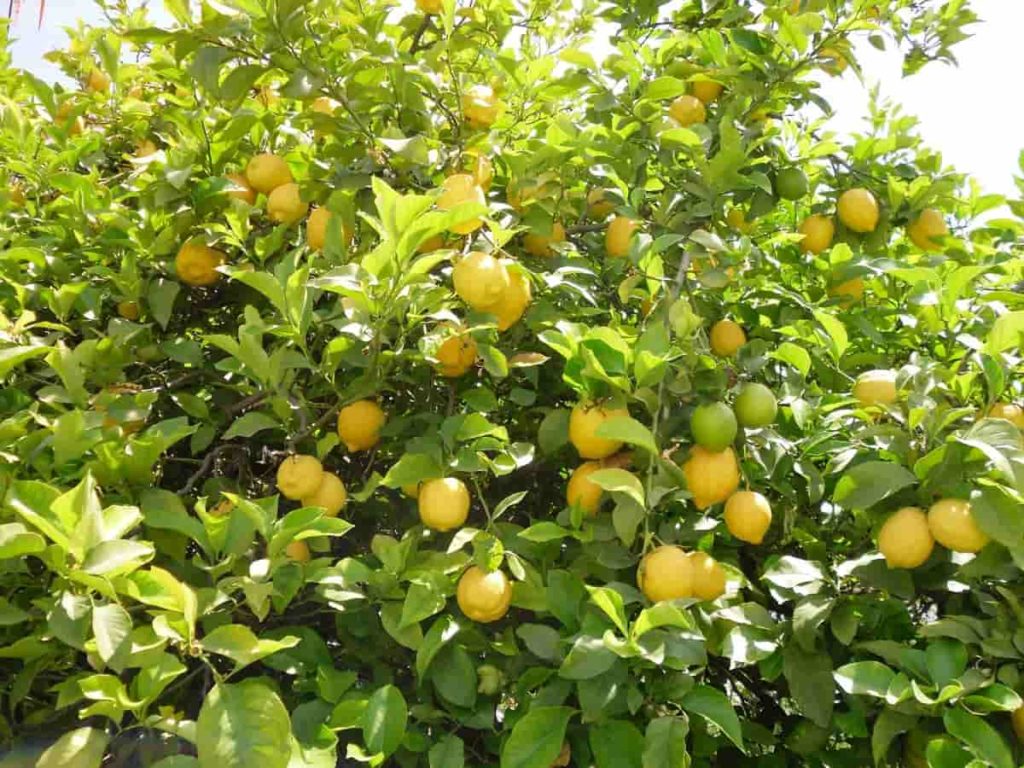
Lemon plants are susceptible to several pests such as mealybugs, aphids, whiteflies, leaf miners, and scales that pressure plant growth. In addition, keep a close eye on spider mites and leaf and flower peduncles to remove horticulture or insecticide soap solution pests.
Step 15: Harvesting
Harvest the crop at the right time, as harvesting will give poor quality sooner or later. When the skin turns green to yellow and shiny, Lemons are ready to pick. Fruits should be 2 to 3 inches (5-7.5 cm) wide and can be easily squeezed. Lemons can also be picked when they are still slightly green and left at room temperature to ripen.
- Economical Aquaculture: A Guide to Low-Budget Fish Farming
- 15 Common Planting Errors That Can Doom Your Fruit Trees
- How to Make Houseplants Bushy: Effective Tips and Ideas
- Innovative Strategies for Boosting Coconut Pollination and Yield
- Pollination Strategies for Maximum Pumpkin Yield
- The Complete Guide to Chicken Fattening: Strategies for Maximum Growth
- Natural Solutions for Tulip Problems: 100% Effective Remedies for Leaf and Bulb-Related Issues
- Revolutionizing Citrus Preservation: Towards a Healthier, Greener Future
- Natural Solutions for Peony Leaf and Flower Problems: 100% Effective Remedies
- Maximizing Profits with Avocado Contract Farming in India: A Comprehensive Guide
- Natural Solutions for Hydrangea Problems: 100% Effective Remedies for Leaf and Flowers
- The Ultimate Guide to Choosing the Perfect Foliage Friend: Bringing Life Indoors
- From Sunlight to Sustainability: 15 Ways to Use Solar Technology in Agriculture
- The Ultimate Guide to Dong Tao Chicken: Exploring from History to Raising
- The Eco-Friendly Makeover: How to Convert Your Unused Swimming Pool into a Fish Pond
- Mastering the Art of Delaware Chicken Farming: Essentials for Healthy Backyard Flocks
- 20 Best Homemade Fertilizers for Money Plant: DIY Recipes and Application Methods
- How to Craft a Comprehensive Free-Range Chicken Farming Business Plan
- Brighten Your Flock: Raising Easter Egger Chickens for Beauty and Bounty
- How to Optimize Your Poultry Egg Farm Business Plan with These Strategies
- Subsidy for Spirulina Cultivation: How Indian Government Schemes Encouraging Spirulina Farmers
- Ultimate Guide to Raising Dominique Chickens: Breeding, Feeding, Egg-Production, and Care
- Mastering the Art of Raising Jersey Giant Chickens: Care, Feeding, and More
- Ultimate Guide to Raising Legbar Chickens: Breeding, Farming Practices, Diet, Egg-Production
- How to Raise Welsummer Chickens: A Comprehensive Guide for Beginners
- How to Protect Indoor Plants in Winter: A Comprehensive Guide
- Ultimate Guide to Grow Bag Gardening: Tips, Tricks, and Planting Ideas for Urban Gardeners
- Guide to Lotus Cultivation: How to Propagate, Plant, Grow, Care, Cost, and Profit
- Agriculture Drone Subsidy Scheme: Government Kisan Subsidy, License, and How to Apply Online
- Ultimate Guide to Raising Araucana Chickens: Breed Profile, Farming Economics, Diet, and Care
- Bringing Hydroponics to Classroom: Importance, Benefits of Learning for School Students
- Ultimate Guide to Raising Polish Chickens: Breed Profile, Farming Economics, Diet, and Care
- Ultimate Guide to Raising Australorp Chickens: Profile, Farming Economics, Egg Production, Diet, and Care
- Silkie Chicken Farming: Raising Practices, Varieties, Egg Production, Diet, and Care
- Sussex Chicken Farming: Raising Practices, Varieties, Egg Production, Diet and Care
- Homemade Feed Formulations for Livestock: Discover Cost-effective Starter to Finisher Feed Recipes
how to manage the leaf curving disease (which makes the leaves unhealthy)?
My lemon tree does not flower although it is 18 years old.Flowering is stopped from last two years.Tell me remedy